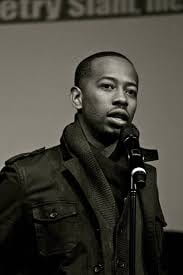Come now, child, adjust your eyes, for sight
Is here a lesser sense. Here you must learn
Directions through your fingertips and feet
And map them in your mind. I think some shapes
Will gradually appear. The pale things twisting 5
Overhead are mostly roots, although some worms
Arrive here clinging to their dead. Turn here.
Ah. And in this hall will sit our thrones,
And here you shall be queen, my dear, the queen
Of all men ever to be born. No smile? 10
Well, some solemnity befits a queen.
These thrones I have commissioned to be made
Are unlike any you imagined; they glow
Of deep-black diamonds and lead, subtler
And in better taste than gold, as will suit 15
Your timid beauty and pale throat. Come now,
Down these winding stairs, the air more still
And dry and easier to breathe. Here is a room
For your diversions. Here I’ve set a loom
And silk unraveled from the finest shrouds 20
And dyed the richest, rarest shades of black.
Such pictures you shall weave! Such tapestries!
For you I chose those three thin shadows there,
And they shall be your friends and loyal maids,
And do not fear from them such gossiping 25
As servants usually are wont. They have
Not mouth nor eyes and cannot thus speak ill
Of you. Come, come. This is the greatest room;
I had it specially made after great thought
So you would feel at home. I had the ceiling 30
Painted to recall some evening sky–
But without the garish stars and lurid moon.
What? That stark shape crouching in the corner?
Sweet, that is to be our bed. Our bed.
Ah! Your hand is trembling! I fear 35
There is, as yet, too much pulse in it.
The content in this poem focuses on the Greek mythological story of Hades and Persephony. The content in this poem is very all over the place as it is comparing and contrasting all sorts of things. The speaker of this poem is Hades, and it is in the first person point of view. The story begins as Hades is waiting on Persophones arrival, and he is anxious. Hades reflects the darkness and the death vibe the underworld has and constrasts it with the vibrant and full of life vibe that persephone has. A.E stallings uses a mixture of different litterary techniques throughout the poem. Stallings mostly uses vivid imagery to get a sense of what the underworld feels and looks like. The imagery helps add to the themes of the poem like, separation, darkness. The imagery also helps describe the persephony’s transition from earth to the underworld. Persephony and Hades are not just mythological beings in this poem, they are given real, and true human emotions in this poem. They are personified in a way to give the story a little more raw emotion. There is an obviois allusion in this poem, as it is a story based off of the story of Hades and Persophone of old Greek Mythology. The diction in this poem helps add to the complexity and the tension in the story. The diction in the poem at times takes example from old words that were commonly used in Greek Mythology. I’ve seen and read many different Greek Mythology books and movies, and this peom shows a different side of the story of the relationship betwen Hades and Persephone. The complex relationship when Persephone returns to the underworld is really an interesting addition to the relationship between Hades and Persephone.
